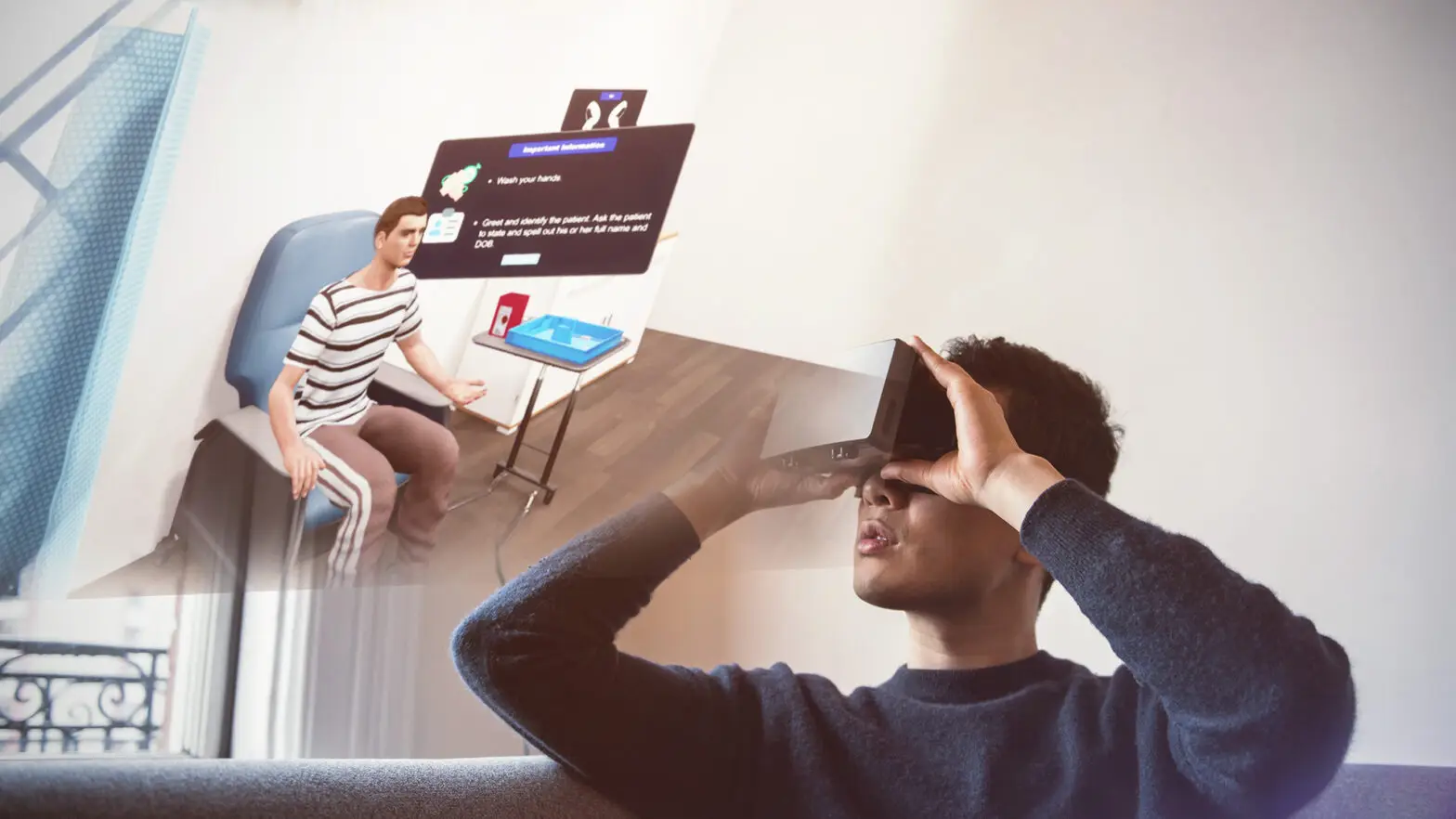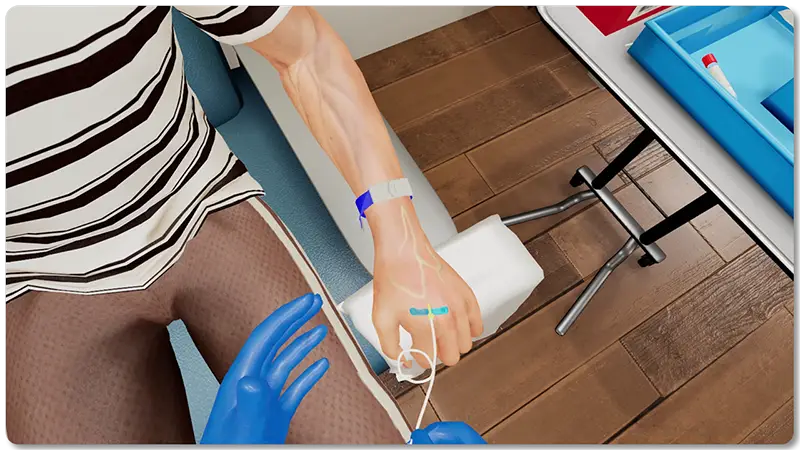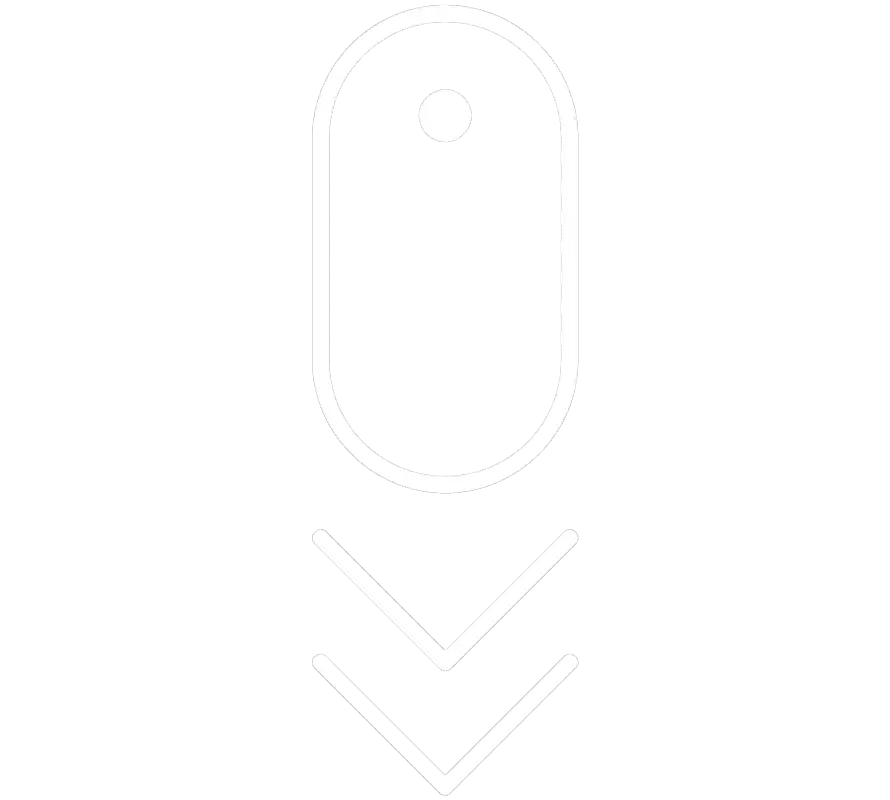Phlebotomy
Developed in alignment with the book Phlebotomy: Worktext and Procedures Manual (Fourth Edition) by Robin Warekois and Richard Robinson.

Phlebotomy is the practice of drawing blood. Blood is collected from the veins by inserting a needle attached to a collection device. The procedure can also be performed with a lancet by making a capillary skin puncture.
In this immersive VR training program, practice skills to perform routine venipuncture using evacuated tubes, syringes, and winged infusion sets , and the capillary collection method. Users are provided equipment that includes needles, tourniquets, tubes, lancets, blood collection devices as well as affordances to help ensure that the puncture site is kept clean, gauze to bandage the puncture site, and material to label the sample correctly. The primary purpose of phlebotomy is to diagnose or monitor the treatment of a patient’s disease condition. This combination of highly developed and rigorously tested procedures and equipment is designed keeping in mind the safety and comfort of a patient as well as to maintain the integrity of a sample.
Core Skills Training

Venipuncture with a syringe is required for patients with fragile veins as the strong vacuum of the evacuated tube may collapse the vein. This VR training is designed to help learners practice the procedure of drawing blood with the help of a syringe and transfer the blood to an evacuated tube using a needleless blood transfer device. Additional equipment required for the procedure are a tourniquet and bandaging material to be applied at the puncture site. The training has step-by-step affordances so that the learner does not skip any step while practicing the procedure. Simulated physics-based injection mechanisms provide an immersive feel, much like a real-world experience.

The goal of this virtual training is to complete a blood collection procedure in a safe and efficient manner using the evacuated tube system after a test request is received from the provider. Blood collection with an Evacuated Tube System includes a tourniquet, vacuum tubes, a double-sided safety needle and a needle holder. In this VR training, the learner will use all required equipment to perform the standard procedure of preparing the patient, cleaning the puncture site, locating the puncture vein, preparing the Evacuated Tube System (ETS) and collecting a blood sample from the virtual patient’s body.

A butterfly needle is a device used to access a vein for drawing blood or administering medication. Some medical professionals refer to a butterfly needle as a “winged infusion set” or a “scalp vein set.” The set gets its name from the plastic wing-like structures on either sides of the needle that is used to access the vein. The set consists of a small gauge needle which is ideal for drawing blood from very small and fragile veins, like those on the back of the hand. A butterfly, or winged infusion draw, can be completed using either an evacuated tube system (ETS) or syringe and transfer device. Learners, in this VR training program, will practice the procedure to collect a blood sample from a virtual patient using the ETS by first preparing the winged infusion set and then by inserting it in the vein of the virtual patient.

Capillary collection (skin puncture or dermal puncture) is an alternate method of drawing blood. This is the preferred method of collecting blood samples of new-borns and infants as well as for ancillary blood glucose testing. A phlebotomist must be familiar and well-versed with the capillary collection method – its uses, advantages, and limitations. Not all conditions qualify for a capillary collection while many circumstances do not permit a venipuncture. A capillary collection procedure involves a puncture equipment with a trigger that must be depressed to create a puncture in the skin to help collect a sample. The sample is collected in micro containers called bullets which come is multiple sizes. In this VR training, learners will clean a puncture site, draw blood using a puncture device, and transfer the sample to a collection container.
Training
With prompts, guidance and affordances learners are hand-held through the process to practice the procedure in a virtual environment with a virtual patient.

Photorealistic Virtual Environment

Physics-based Interactions

Learn by Doing

Visual Affordances
Assessment
Test skills to perform the procedures from start to finish without prompts. An incorrect step will take the learner back to the start to start afresh.

Live Scoring

Instant Feedback

Unlimited Practice Sessions



